The wild look is once again capturing the imagination of garden enthusiasts and professional landscapers and designers alike. This approach celebrates the untamed beauty of nature, offering a delightful departure from rigid, formal garden structures.
We can draw inspiration from the natural landscapes of Australia and the dynamic designs showcased at events like the Melbourne International Flower and Garden Show as well as Instagram to create an idealised version of nature, without all of the plant death that happens in real Aussie ecosystems.
You may have read a recent article I wrote titled “The Wild Look in Native Landscape Design,” (link to an article I wrote this week for Ozbreed AU website) where I discussed some of the lessons learnt from three decades of Ozbreed’s focus on native plants. If you’d like to learn how to create wild gardens that last, please do read that article because it’s an invaluable resource.
In this article, we’re going to focus on building a robust plant palette with dependable native Aussie cultivars which you can rely on to look great for decades to come, while providing ample biodiversity resources including food and habitat.
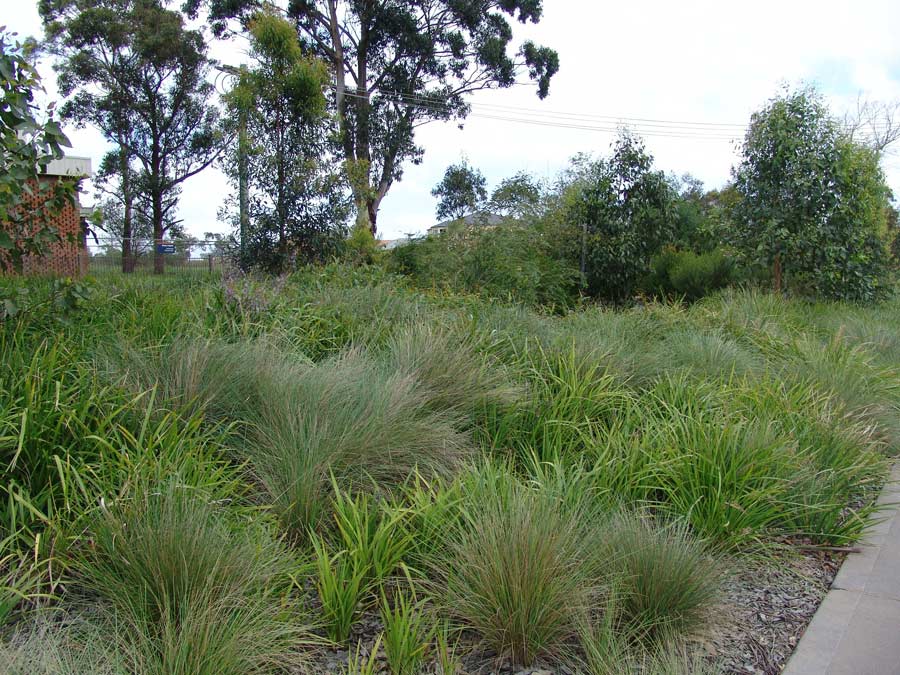
The wild look celebrates the natural shapes of plants. This bed has a lot of green and coppery brown tones, but you can add a lot more colour if you choose.
The Wild Look in Australian Native Gardens
Achieving the wild look involves more than simply allowing plants to grow unchecked. It requires a thoughtful understanding of horticulture, your plant palette, and the conditions they thrive in.
Successful wild gardens mimic the idealised chaos of nature, where plants are left to form their natural shapes. This aesthetic is characterised by avoiding straight lines, layering textures, and a variety of plant forms that together create a harmonious, yet seemingly spontaneous, landscape.
What we want is an idealised version of nature where everything always looks beautiful. We don’t want everything to die and be replaced by whatever seeds are lying about which is what actually happens in natural Australian ecosystems, where it’s easier for plants to die and let their seeds replace them rather than to survive through harsh years of drought or flooding.
Lessons Learned in Landscape Design
The journey towards perfecting the wild look has not been without its lessons. Past experiences, particularly those from high-profile projects like the Sydney Olympics, highlighted the importance of choosing robust, low-maintenance plants over ephemeral plants which live fast and die young.
Again, please read my article titled The Wild Look in Native Landscape Design (link) to learn more about the lessons we’ve learnt over the last three decades.
Best Plant Palette for Wild Look Gardens
Without further ado, let’s dive right into some of the best native varieties that have been naturally bred for the wild look. We’ll start with some new plants that we’ve recently released, and then we’ll explore some of the plants that have been succeeding in landscapes for a while now.
New plants
Ground Hug™ Myoporum insulare ‘MYIN01’ PBR Intended
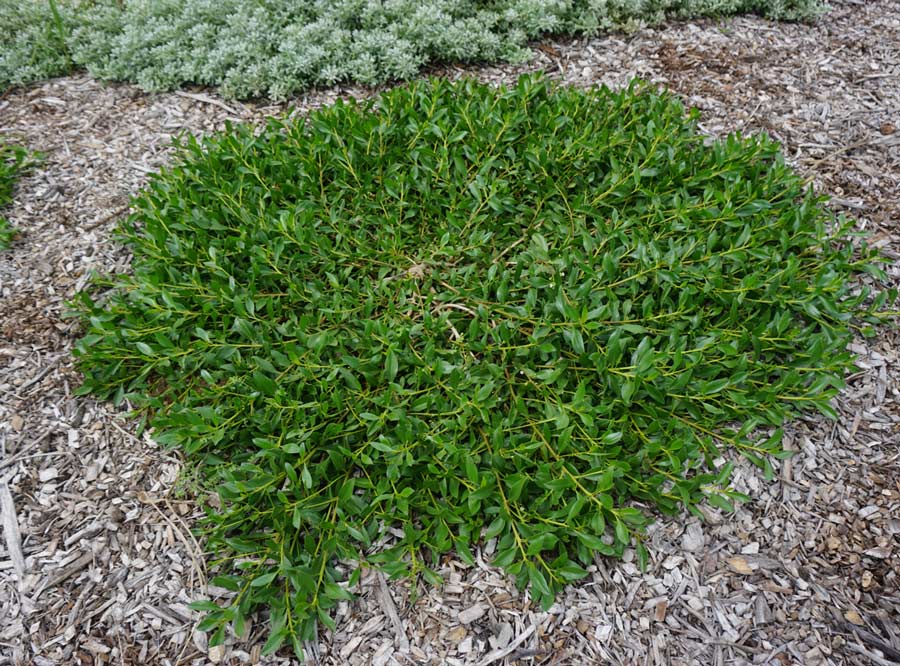
Available from October 2024, this ultra-flat ground cover is perfect for coastal and inland applications. Its ornamental foliage with finer leaves offers a dense mat that suppresses weeds effectively. Ideal for wide coverage with fewer plants, this ground cover’s flowers are attractive to pollinators but its foliage is the draw card from an aesthetic perspective.
Lady Tanika® Lomandra longifolia ‘LM360’ PBR Intended
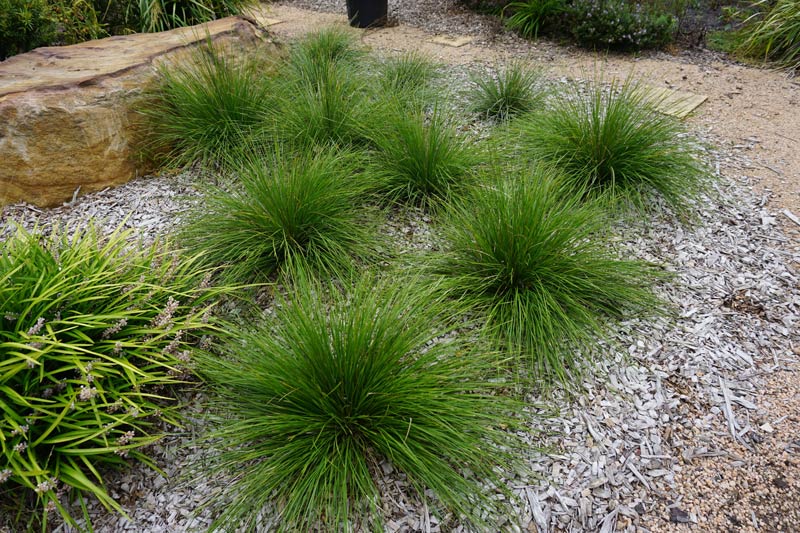
This female Lomandra, available from March 2025, is designed to deter insects and reduce root rot risk, making it ideal for playgrounds and roadsides where ants and birds are undesirable. Its ultra-clean, cascading green leaves look beautiful without disrupting line of sight. Its broader spread and shorter height compared to Tanika make it suitable for line-of-sight landscapes. It’s suitable for most Australian climates.
Groundswell™ Hibbertia scandens ‘HBS01’ PBR Intended
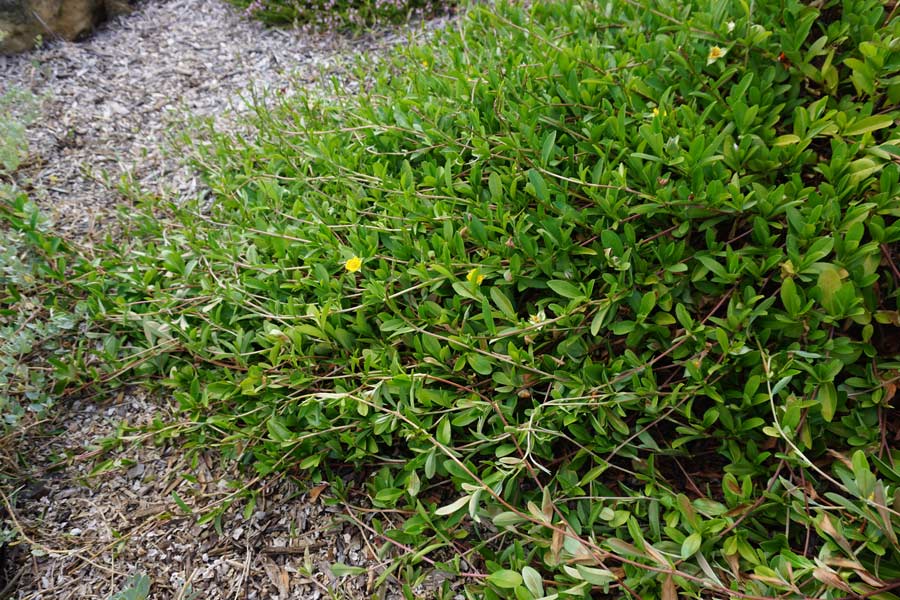
Available in September 2024, this dense ground cover thrives in coastal landscapes and adapts to inland conditions with heavier frosts. Its tidy appearance and eroded control capabilities make it ideal for low-maintenance landscapes across QLD, NSW, WA, and SA.
Straightup™ Hibbertia scandens ‘HBS02’ PBR Intended

Expected in November 2024, this versatile plant functions as a climber or shrub with unique purple foliage in cooler regions. Its ability to withstand drought, heat, and salt makes it suitable for cottage gardens and coastal landscapes. Use this variety where you need the climbing without the ground cover.
Thriver™ Eremophila spp ‘Erem01’ PBR Intended
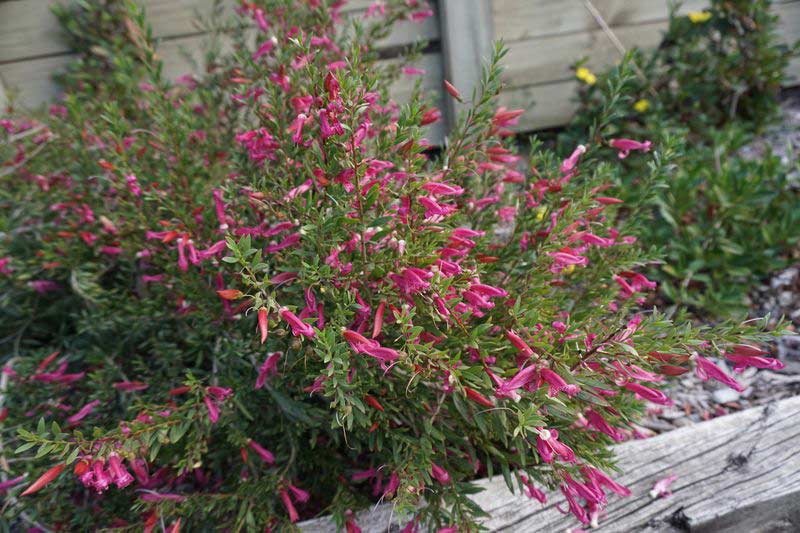
Coming in November 2024, this plant’s dense growth and vivid pink flowers make it perfect for hedging. Its resilience in humid and moist conditions, as demonstrated in Western Sydney, underscores its suitability for challenging climates, unlike most other eremophilas. Coppice this plant to the base every few years and it will avoid leggy growth and live a lot longer.
Blue Horizon™ Eremophila glabra ‘EREM1’ PBR
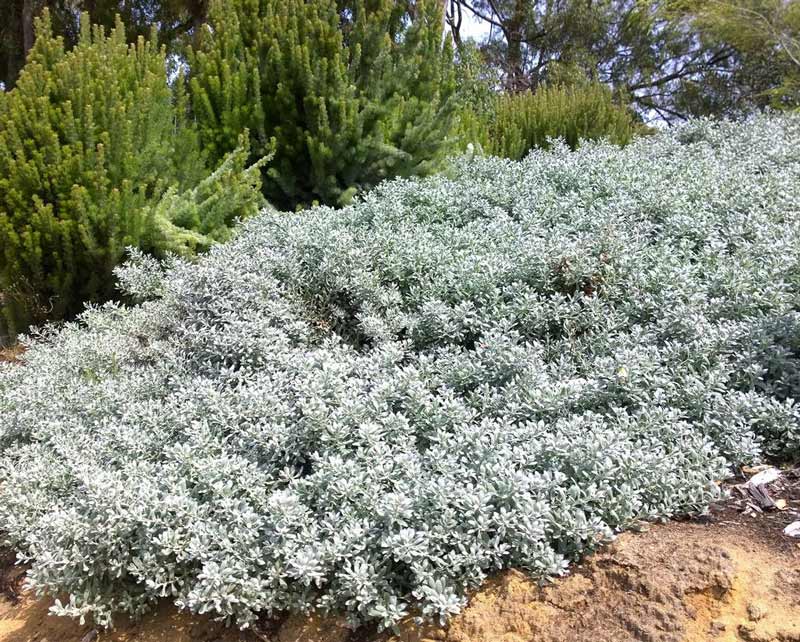
This dense ground cover was bred for its blue-grey foliage and vibrant yellow winter flowers. Its ability to withstand humidity, particularly in Sydney, is highly uncommon for the genus. Perfect for adding structure and seasonal colour to wild gardens. It’s already available on the market.
Space Saver™ Melaleuca armillaris ‘Mela01’ PBR Intended
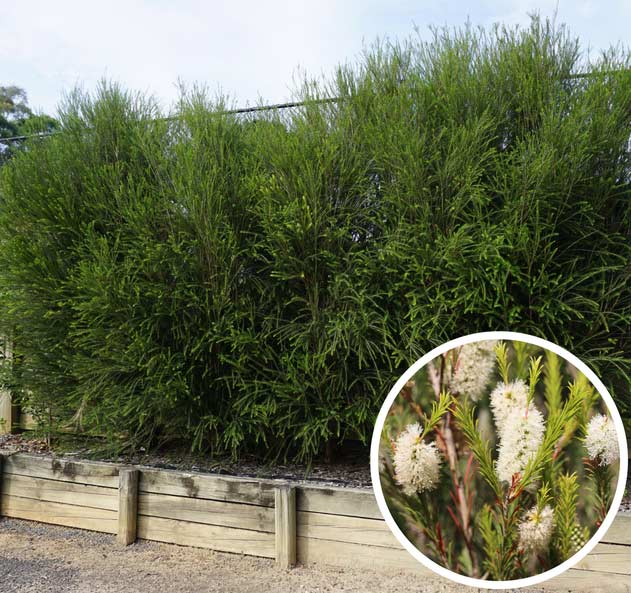
Available from November 2024, this narrow shrub is ideal for compact spaces, offering privacy with its dense foliage. Its elegant white flowers add decorative appeal and are a bounty for pollinators, making it suitable for both functional and aesthetic purposes. Give it a stake while it establishes, but take it out after no longer than a year to make sure the ties don’t choke the plant.
Shara Blue™ Lomandra fluviatilis ‘LM380’ PBR Intended

Set for March 2025, this plant offers resilience to wet soils and Phytophthora disease. Its ornamental blue foliage and robust growth make it a standout in landscapes seeking durability and aesthetic appeal. Shara Lomandra has been a very popular variety, and this plant gives another slightly larger option with bluer, cleaner foliage.
Baby Breeze™ Dianella ‘DCNC3’ PBR Intended
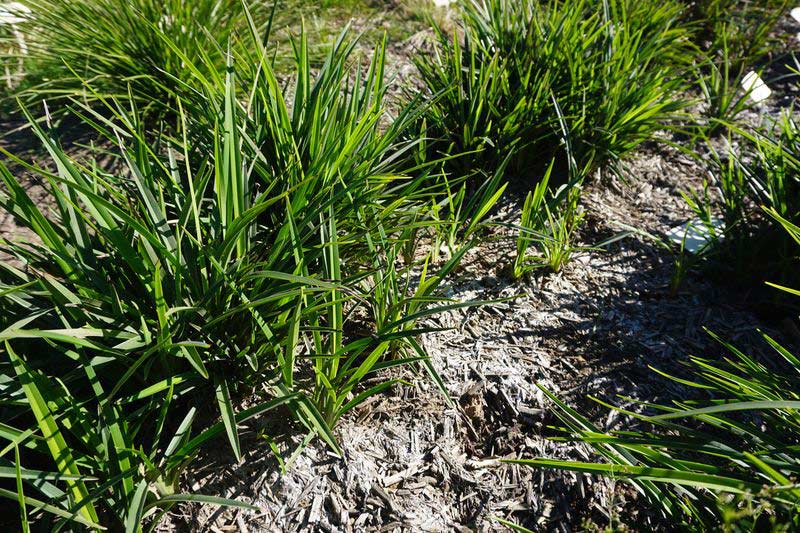
Coming in March 2025, this compact Dianella offers dense spread and line-of-sight applications. Its resilience in floods and clean foliage make it ideal for roadside and high-traffic areas; it’s even able to bounce back from rhizomes after being driven over.
Summer Rev™ Dianella spp ‘Dian04’ PBR Intended
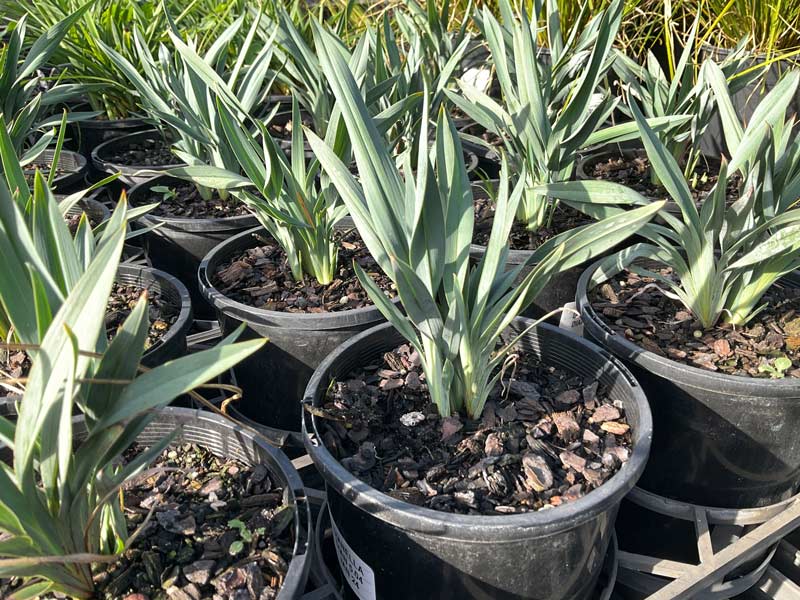
Available October 2024, this Dianella features clean blue-grey foliage with excellent growth in humid conditions. Its compact form and ease of care make it a favourite for growers and landscape designers alike. This could be my favourite dianella in terms of foliage ever – the glaucous blue tones and architectural form are quite remarkable.
Grass Tree 310™ Lomandra ‘LM301’ PBR Intended
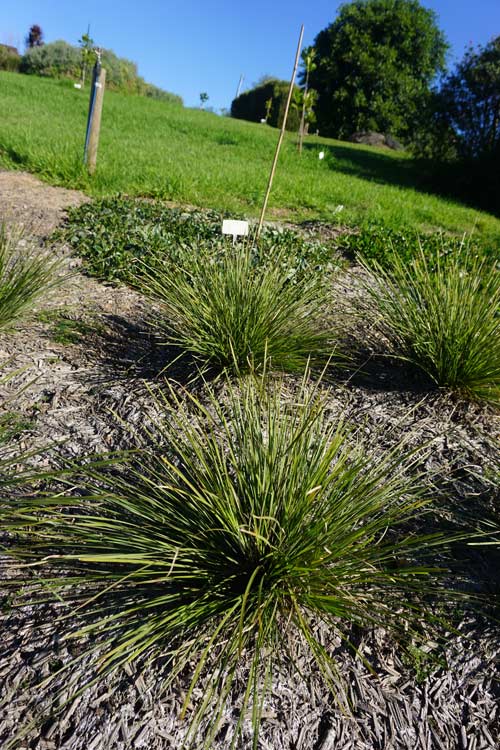
Due in March 2025, this plant resembles a baby grass tree with its upright foliage and dark green leaves, offering an iconic native look. Its improved root rot resistance makes it suitable for various climates and design applications where grass trees cannot survive.
Ozbreed Flat White™ Pandorea jasminoides ‘PJ01’ PBR
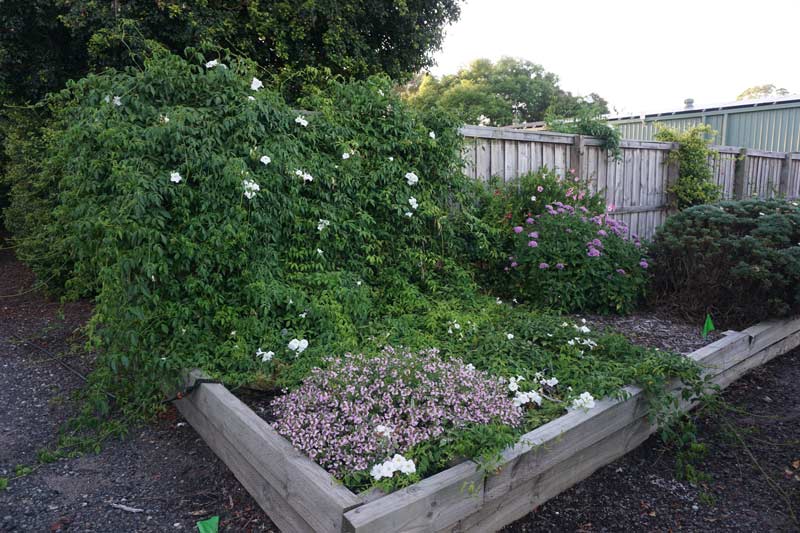
As the first ground-cover Pandorea, this variety offers masses of pure white flowers and thrives in a range of soils with moderate frost and drought tolerance. Its compact climbing nature makes it suitable for narrow spaces, and it’s one of the only plants I know that are able to clim structures, cover flat ground, and cascade down slopes and rockeries. Common forms don’t grow like that, and neither do they hold their foliage as well as this cultivar.
Aussie Flat Bush™ Rhagodia spinescens ‘SAB01’ PBR

With striking blue foliage, this low-growing shrub excels in both inland and coastal settings, making it ideal for roadsides and tough landscapes without irrigation. The glaucous blue foliage is very attractive.
Aussie Hedge Bush™ Rhagodia spinescens ‘SAB02’ PBR Intended
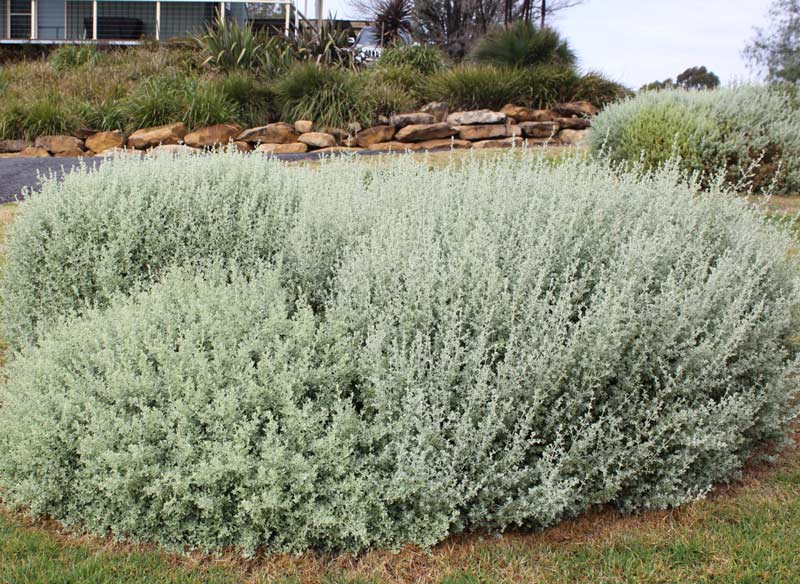
Available January 2025, this ultra-tough native hedge is taller than the previous-mentioned variety. It’s tough in drought and coastal conditions, with a beautiful natural shape when left unpruned.
Coastal Pink™ Correa alba ‘COR10’ PBR

This robust coastal plant features stunning pink flowers and a strong growth habit, ideal for gardens embracing natural, unpruned shapes. It will grow large enough to be used for screening and short wind breaks as a medium-to-tall shrub.
Ozbreed Zen Grass® Zoysia spp. ‘ZOY01’ PBR

This low-maintenance lawn alternative offers dense, evergreen growth, perfect for between pavers or as a low-mow option. Its unique rippling surface adds texture to gardens, showcasing the wild aesthetic in a structured manner. While this isn’t your stereotypical “bush” style plant, it is a native hybrid that only needs mowing once every one or two years.
Rustic™ Poa spp. ‘POL11’ PBR
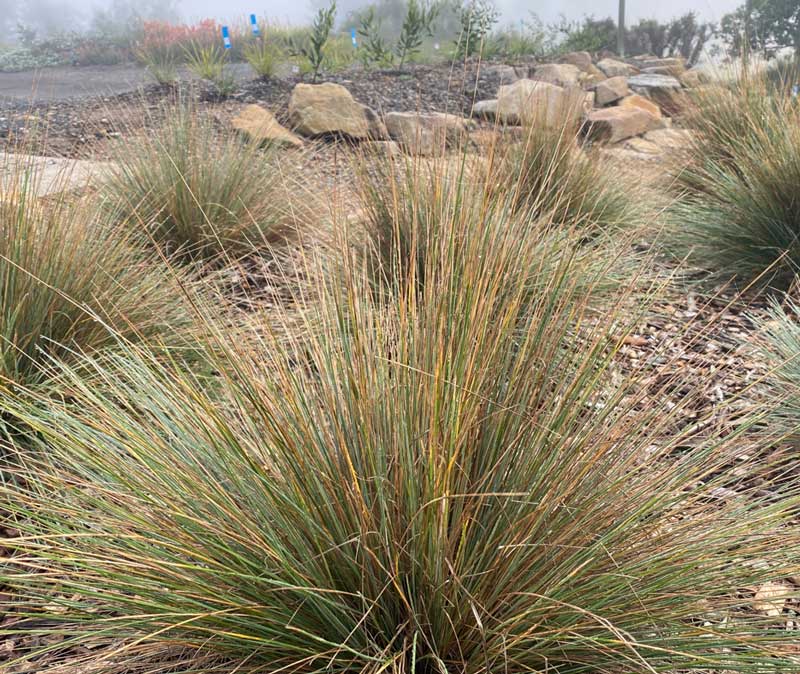
This compact true grass offers on-trend rustic foliage with rapid establishment, ideal for mass plantings. Its no-fuss nature and ability to maintain a tidy form even when unpruned make it a practical choice for clear visibility in wild-looking landscapes. Brush cut it to the ground just before spring each year and watch the new growth bounce back.
Eskdale Blue™ Poa spp. ‘POL12’ PBR
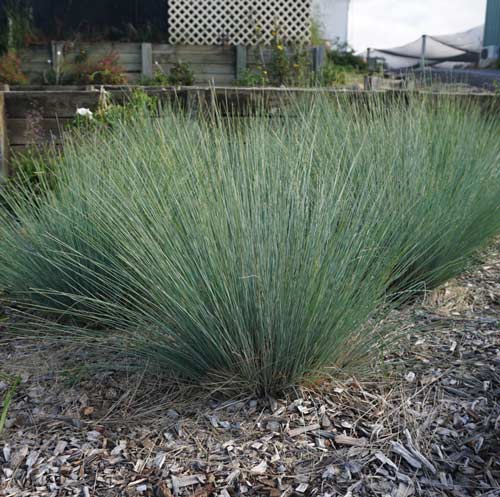
With its compact form and blue foliage, this grass is highly drought and frost tolerant. It establishes rapidly, making it an excellent choice for quick results in creating mature landscapes that evoke the Australian wilderness.
Established, classic cultivars
Better John™ Callistemon viminalis ‘LJ1’ PBR
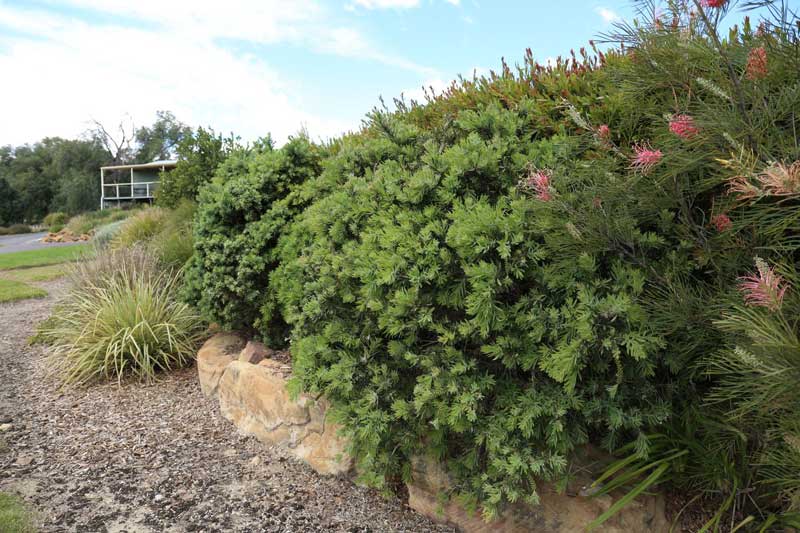
Bred from the popular Little John, Better John™ Callistemon offers a compact form with blue-green foliage and an abundance of striking red flowers in late spring which birds and insects love. This cultivar is particularly valued for its ease of growth and establishment, making it an ideal choice for specimen and contrast planting with low maintenance budgets. It thrives in full sun to part shade, adapting well to sandy and clay-based soils; even wet soils with phytophthora and gardens with myrtle rust.
Green John™ Callistemon viminalis ‘LJ23’ PBR

Green John™ Callistemon is noted for its vibrant light green new growth, providing a delightful contrast with its older foliage and red blooms. This variety also establishes faster than its predecessor, Little John, offering increased density and resistance to myrtle rust and phytophthora. Suitable for full sun to part shade, it tolerates a range of soils, and provides habitat and food for landscape ecology.
Fluro Burst™ Callistemon spp ‘CNU19’ PBR
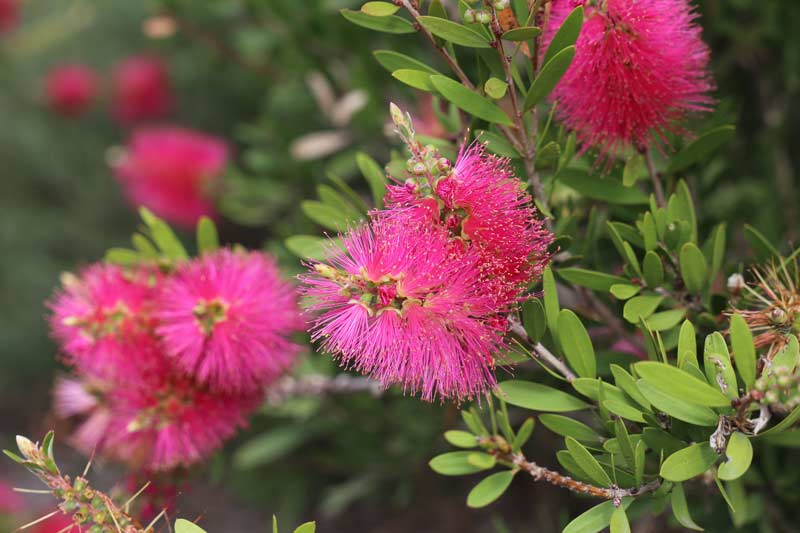
With its hot fluro pink flowers, the Fluro Burst™ Callistemon injects bold colour into any landscape, attracting native bees, birds and human visitors alike. This semi-compact variety maintains its tidy form naturally without pruning, besides a good coppice every few years. It’s well-suited for natural-shaped hedges, mass plantings, and as a feature plant, thriving in most soil types and demonstrating excellent drought and frost tolerance.
Icy Burst™ Callistemon spp ‘CNU01’ PBR
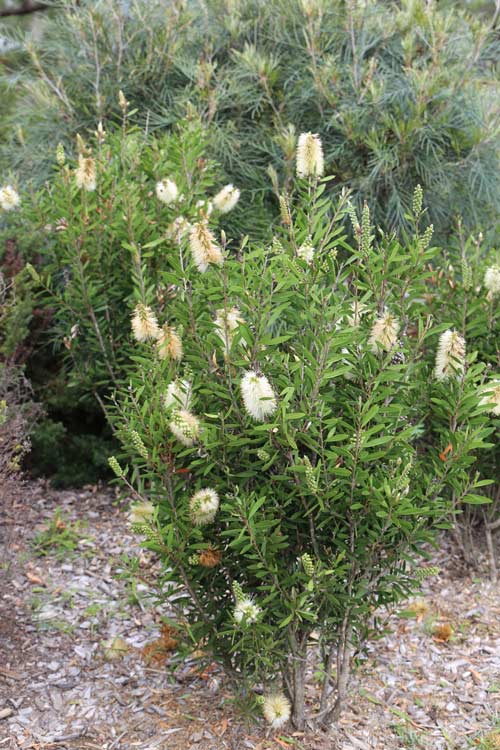
The naturally narrow Icy Burst™ Callistemon, with its vibrant white spring flowers, is perfect for tight planting areas. Its fine leaves and upright growth make it a sophisticated choice for hedges and contrast planting. This low-maintenance bottlebrush thrives in full sun to part shade, tolerating drought and frost, and requiring no pruning to maintain its elegant form besides a good coppice to the ground every few years.
Sweet Burst™ Callistemon spp ‘CNU15’ PBR
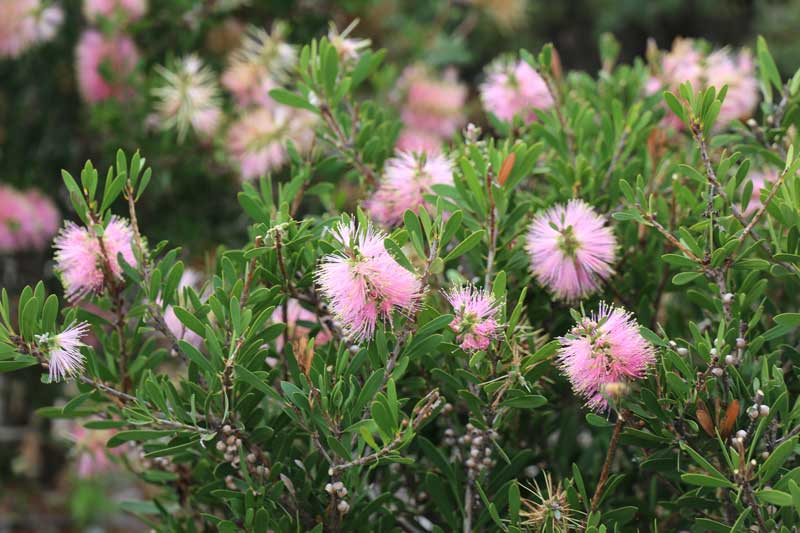
Sweet Burst™ offers soft baby pink flowers, providing a gentle splash of colour while maintaining a semi-compact form. This Callistemon is excellent for low naturally-shaped hedges, mass plantings, or as a standalone feature plant, offering beauty with minimal upkeep.
Naringa™ Westringia hybrid ‘WES01’ PBR
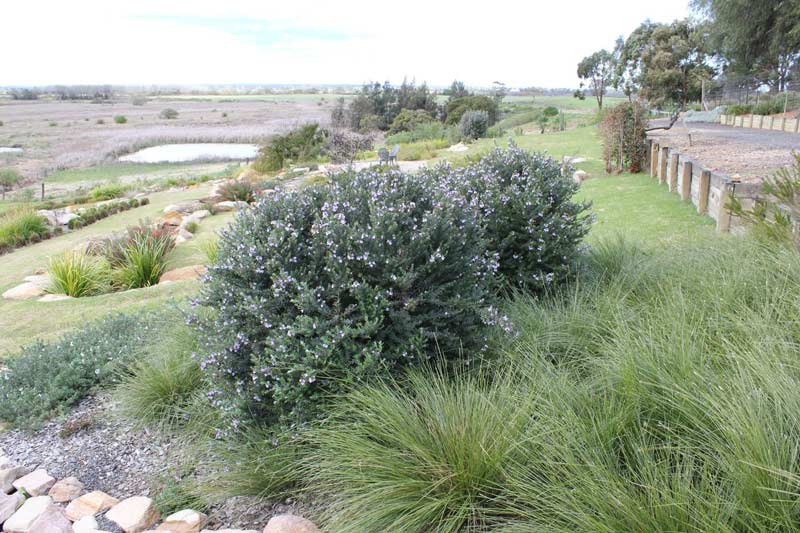
Naringa™ is renowned as the premier hedging Westringia, with a tidy form and masses of mauve flowers. It can be coppiced or left in its natural shape for the wild look, or you can hedge prune it if you’d rather control its shape as a fenceline wind break or screen. Its resilience to cold and drought, combined with adaptability to sandy soils, ensures its suitability across diverse Australian regions that don’t experience wet feet.
Low Horizon™ Westringia fruticosa ‘WES06’ PBR

This ultra-compact ground cover Westringia is ideal for low-maintenance gardens, offering dense foliage and excellent cold tolerance. It’s perfect as a ground cover or border plant and is quite possibly the most visually attractive westringia ever bred, both in terms of its clean dense foliage and abundant white flowers.
Grey Box™ Westringia fruticosa ‘WES04’ PBR

A celebrated choice for native gardens, Grey Box™ Westringa provides a compact form with grey foliage and white flowers. Its drought tolerance and natural ball shape make it a fantastic alternative to traditional hedges, offering a wild yet structured aesthetic without the need for frequent pruning. It’s a native alternative to Buxus, and one of the only westringias capable of tolerating wet feet.
Blue Gem™ Westringia hybrid ‘WES03’ PBR
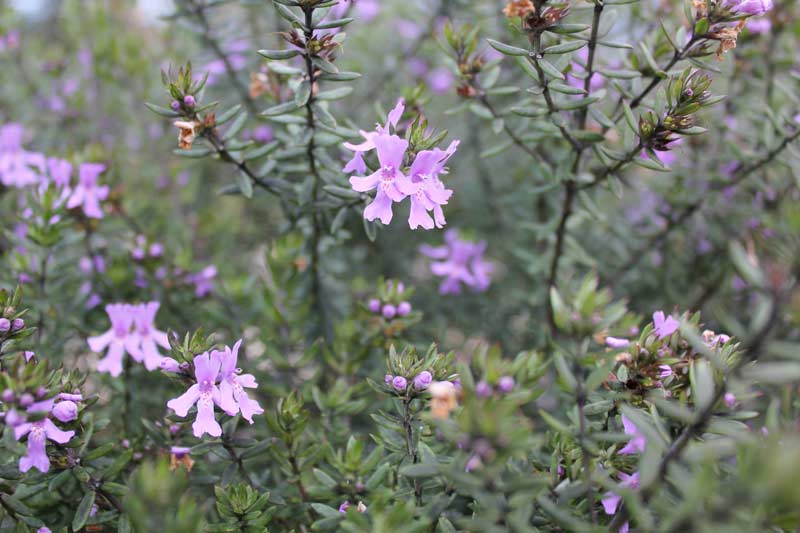
Renowned for its vivid bluish-purple flowers, Blue Gem™ Westringia is a standout choice for native and flower gardens alike. Ideal for full sun to light shade, it thrives in sandy to well-drained clay soils, tolerating both cold and drought. Grow this plant for its attractive foliage, and especially for its beautiful flowers which are most abundant in spring, but sporadic throughout the rest of the year.
Yareena™ Myoporum parvifolium ‘PARV01’ PBR

A hardy ground cover, Yareena™ Myoporum is well-suited to coastal positions, with its crisp foliage and prolific white flowers. Its durability in frost and drought conditions ensures long life, making it an excellent choice for diverse soil types, from sandy to heavy clay, across Australia. It has short internodes and gets less stressed than other forms in poor soils and drought, meaning it is much denser with more foliage on each stem.
Clarity Blue™ Dianella hybrid ‘DP401’ PBR
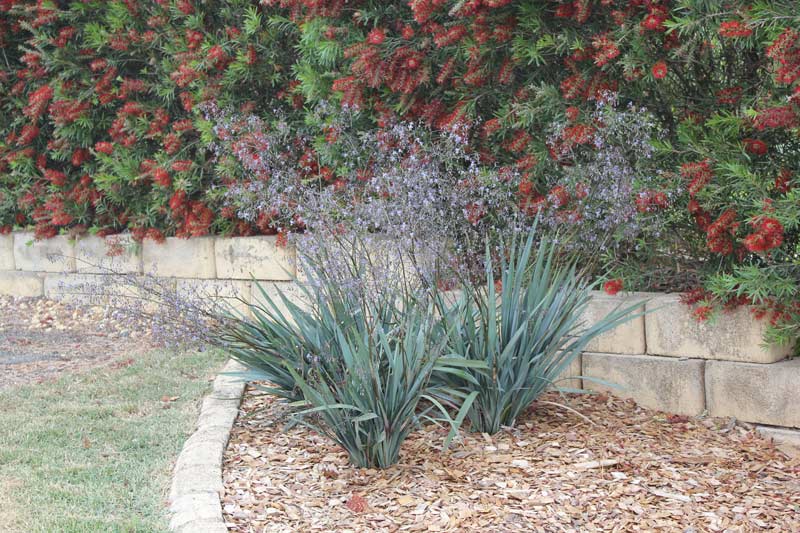
This Dianella variety, with its clean blue foliage and clumping habit, is perfect for accent planting and colour contrast. Tolerant of drought and frost, Clarity Blue™ Dianella is best suited to well-drained soils. It has gotten its name because of the clear, clean foliage in tough conditions.
Evergreen Baby™ Lomandra labill ‘LM600’ PBR
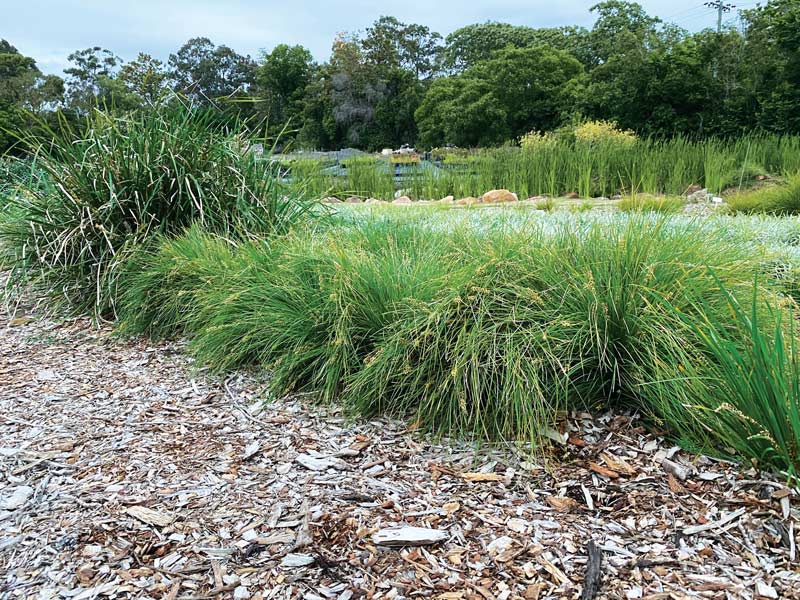
Evergreen Baby™ Lomandra is a compact fine-leaved variety that withstands periodic wet feet and drought. Its adaptability across various soils and climates makes it ideal for mass planting on uneven ground, feature planting, and borders, especially where line of sight is critical.
Katie Belles™ Lomandra hystrix ‘LHBYF’ PBR
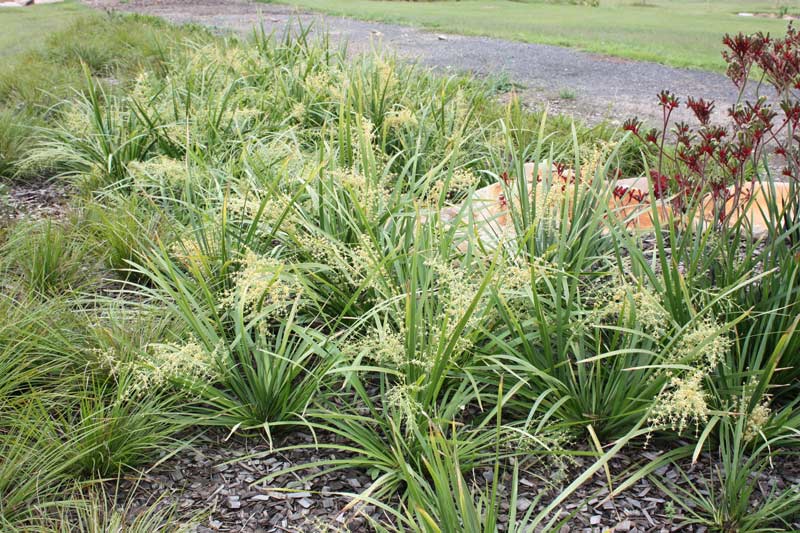
A high-performing rain garden plant, Katie Belles™ boasts stunning perfumed flowers and significant erosion control capabilities. This Lomandra thrives in both wet and dry conditions, making it an ideal choice for watercourses and drainage channels. Its foliage is more upright than Tropic Cascade™ Lomandra.
Tropic Cascade™ Lomandra hystrix ‘LHWP’ PBR
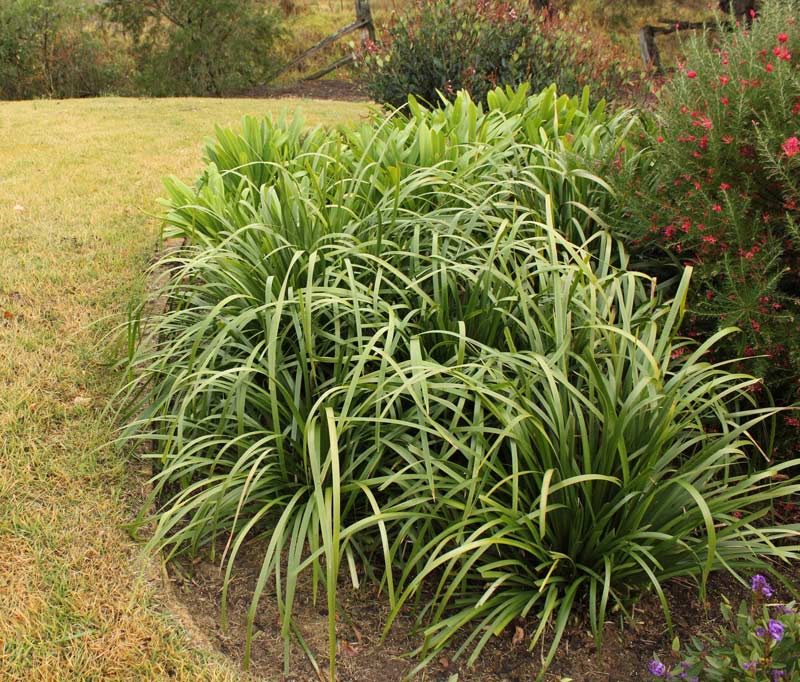
With its compact, weeping form, Tropic Cascade™ adds a graceful touch to tropical and subtropical gardens. Its ability to handle wet feet and cold makes it versatile, while its erosion control strength is an added benefit for landscape stability. Use it as a feature plant, allow it to cascade down rockeries, or mass plant it for an impenetrable sward that prevents pedestrians from entering pools, dams, waterways, etc.
Tasred® Dianella tasmanica ‘TR20’ PBR

This Dianella, with its colour-changing foliage and dense appearance, is a robust native alternative to Phormium, offering excellent erosion control. Its adaptability to various soil types and climates makes it a reliable choice for mass plantings and low-water gardens that don’t get too humid.
Emerald Arch® Dianella tasmanica ‘DT23’ PBR
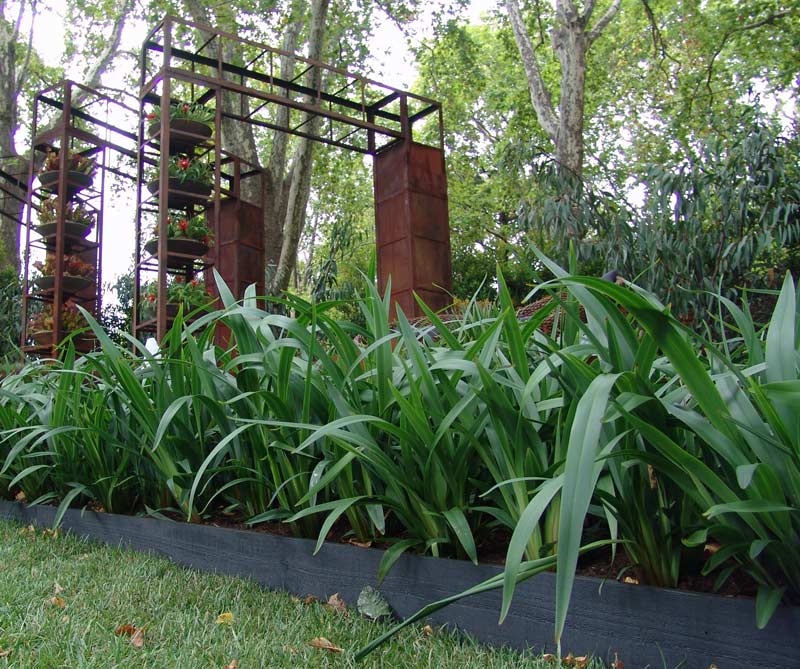
Emerald Arch® provides a tropical aesthetic with its broad, arching leaves. This Dianella is suited to cooler climates, where it thrives with minimal water needs. It’s perfect for mass plantings, low borders and rockeries.
King Alfred® Dianella caerulea ‘JOHN316’ PBR

The best erosion control plant we tested with 752% control compared to bare soil (Layt, Paananen, 2007), King Alfred® Dianella is an absolute beast of a plant, as long as you prune it to the base every few years. It has dense foliage and striking flowers. Its broad adaptability to different soils and climates, along with its structural integrity, makes it a valuable component in wild garden designs.
https://www.ozbreed.com.au/best-plants-for-erosion-control/
Tanika® Lomandra longifolia ‘LM300’
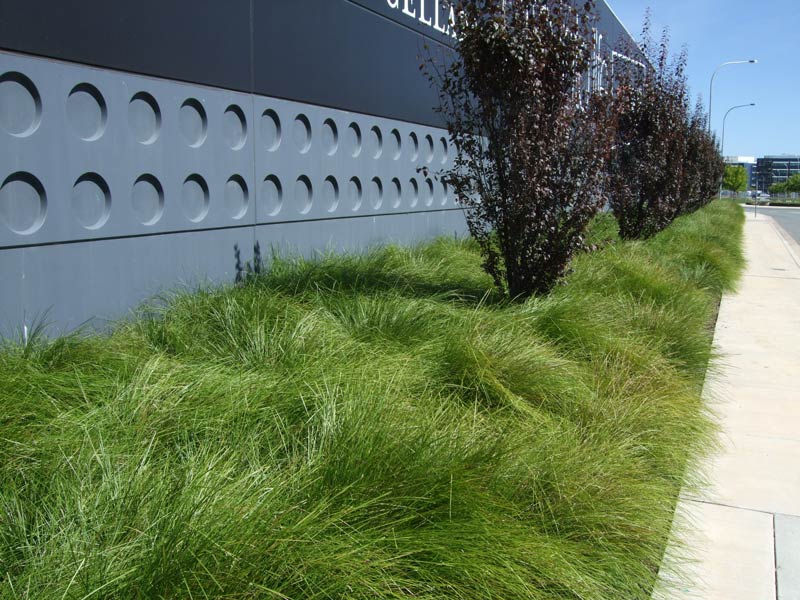
A consistent performer, Tanika® Lomandra’s soft evergreen foliage and drought tolerance make it a staple for borders and mass plantings. Its versatility across various soil types ensures its place in diverse landscape designs. It’s one of the most popular Australian landscape plants for a reason: it’s tough, it’s functional and it looks awesome.
Shara™ Lomandra fluviatilis ‘ABU7’ PBR

Featuring compact form and vibrant flowers, Shara™ Lomandra is ideal for mass plantings in both periodically wet and dry areas. Its Phytophthora tolerance makes it suitable for humid climates, contributing to its reputation as a top-performing rooftop garden plant.
Nafray® Pennisetum alopecuroides ‘PA300’

This is a superior variety of the native Australian Swamp Foxtail, distinguished by its compact form and exceptional drought tolerance. Unlike other exotic and native pennistums, Nafray® is not weedy, making it a responsible choice for eco-conscious gardeners. Its finer texture and vibrant winter colour and showy, feathery plumes, which emerge from summer through autumn, add a dynamic element to borders, rockeries, and roadsides.
Cream Lea® Pennisetum alopecuroides
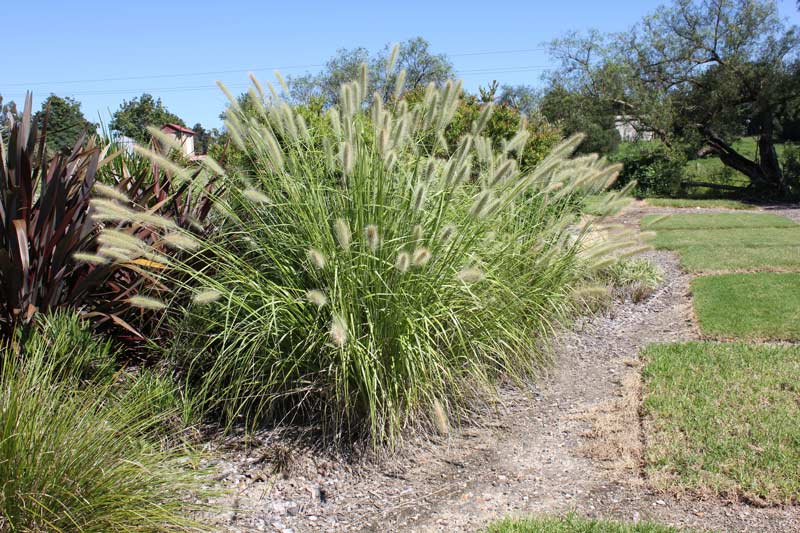
This variety offers a stunning display with its feathery cream to white flower heads that beautifully contrast with tall lime green foliage. These native Australian pennisetums not only look great, but also attract native birds, beneficial ants and beetles. Its clumping growth habit and elegantly arching leaves make it suitable for mass or accent plantings in borders, rockeries, and low-maintenance gardens across Australian.
Shadow Star™ Libertia paniculata ‘LPP01’ PBR

Shadow Star™ features weeping foliage and larger white flowers, and is perfect for a bush or tropical theme. If you have a shaded position you’re trying to fill, I have good news: this is your plant.
Anigozanthos Hybrids (e.g., ‘Amber Velvet’, ‘Everlasting Gold™’)
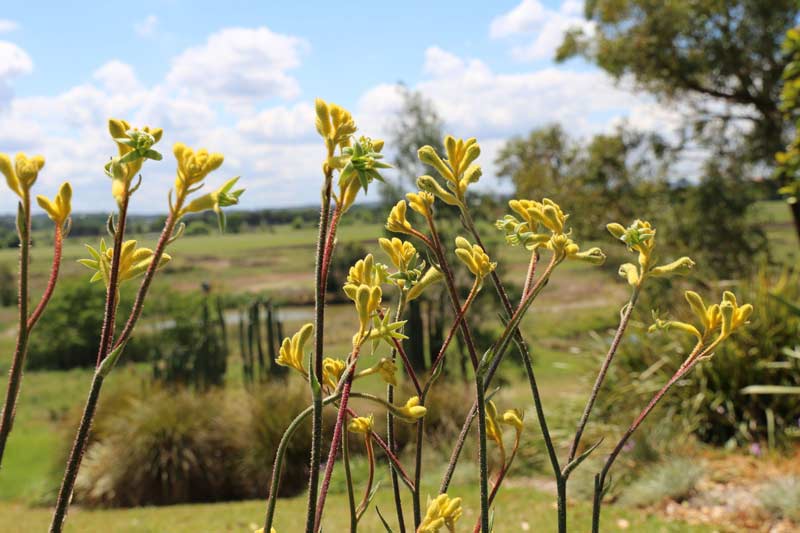
These kangaroo paw varieties feature abundant, vibrant flowers and robust foliage, providing year-round colour and architectural form. Their adaptability to various soil conditions and climates extends their range well beyond their native WA. They’re ideal for low-maintenance gardens, borders, and feature plantings.
Luscious® Tristaniopsis laurina ‘DOW10’ PBR

With its large, shiny leaves and striking red new growth, Luscious® Tristaniopsis offers a lush native alternative to exotic magnolias. Its bark, a stunning port colour that peels to reveal cream stems, adds unique visual interest. Highly resistant to myrtle rust, this versatile tree performs best in full sun to part shade, thriving in a wide range of soil conditions across most of the country.
Sublime™ Acmena smithii ‘DOW30’ PBR
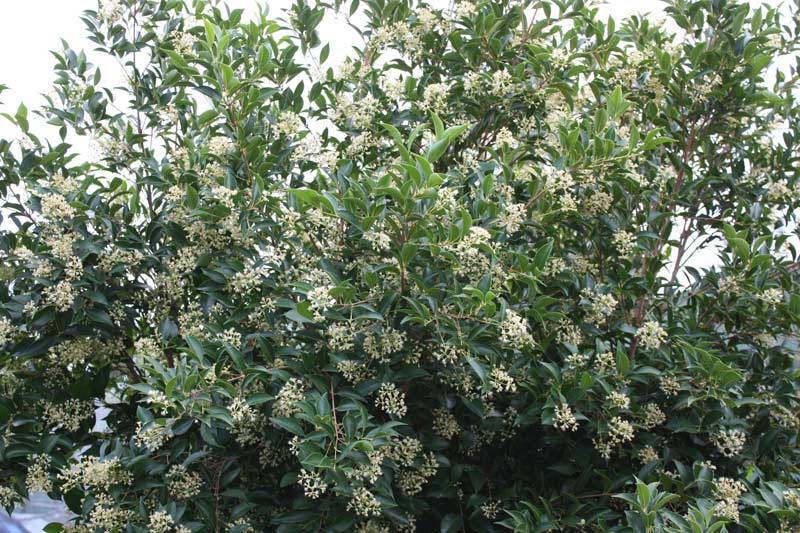
For those seeking a hardy screening option, Sublime™ Acmena provides lush lime green new growth with dense, psyllid-resistant foliage. Its minimal berry production and masses of white summer flowers make it ideal for hedges and topiary where birds and mess are undesirable. Use this plant from windy, salty, sandy seaside gardens to heavy clay loams.
Sweeper® Waterhousea floribunda ‘DOW20’ PBR

This improved Waterhousea variety is characterised by its heavily weeping form and dense foliage, which is perfect for creating lush screens or street trees. With its elegant rippled leaves and large white flower clusters, Sweeper® lilly pilly adds softens urban hardscapes. Make sure you give it a lot of space as this tree can grow taller than 10m in ideal conditions.
Straight and Narrow™ Syzygium australe ‘SAN01’ PBR
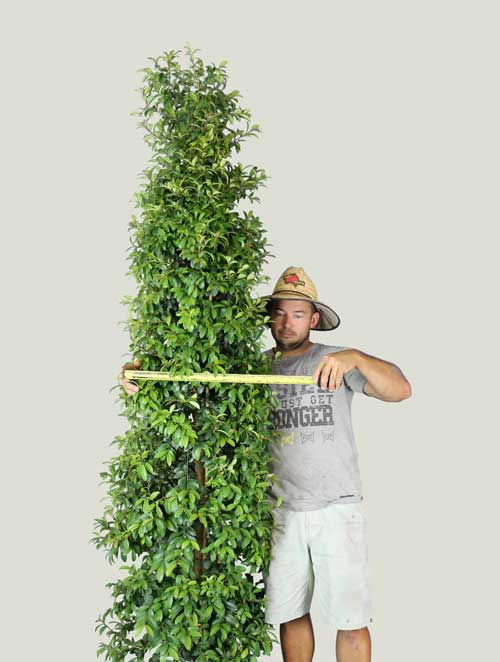
A naturally slender lilly pilly, Straight and Narrow™ is perfect for tight planting areas, offering a dense, psyllid-resistant hedge. Its glossy leaves and pink/red fruit following white flowers add aesthetic value. This plant continues to grow in popularity because it’s highly useful in tight spaces with variable sunlight.
Fire Bells™ Correa pulchella ‘COR11’ PBR
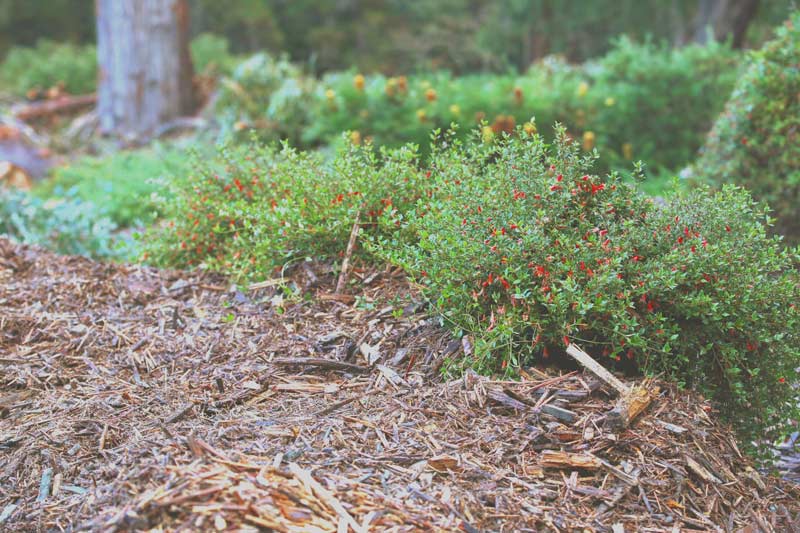
Compact and low-maintenance, Fire Bells™ Correa is a vibrant addition to small gardens and patios. Its intense orange/red winter flowers attract birds, while its drought and frost tolerance make it a resilient choice for diverse settings. Suited to full sun to light shade, it thrives even in reasonably drained soils in non-humid areas.
Practical Advice for Maintaining a Wild Garden
Maintaining a wild garden requires occasional intervention to ensure that the space remains lush and inviting.
Pruning should be carried out to encourage natural plant shapes rather than formal hedges. Respect the plant’s natural shape; while a bit of tip pruning can thicken up a shrub, doing it too often can end up creating a hedge. To maintain a natural branch shape, prune back to a fork no thinner than 1/3 of the diameter of the branch you’re cutting.
Strappy plants like lomandras, dianellas and kangaroo paws can be pruned to the base every few years to allow them to regrow fresh, undamaged foliage. If you’d like to reduce a plant’s size, remove the outer rhizomes rather than hedge-pruning it into a dome shape.
Clumping grasses like poas and pennisetums may look a bit lackluster during certain parts of the year from the perspective of gardeners that love the manicured look. But in the natural aesthetic, we embrace the brown coppery tones. Prune them in late winter/early spring fairly low to the ground while leaving a couple of nodes per stem. You can do this with a brushcutter and leave the foliage on the ground as mulch, or with a pair of secateurs in one hand and tufts of grass in your other hand to make disposing of the foliage into a compost bin easier. Raking up the green waste can be cumbersome as the stems and leaves are so thin.
Leave tree pruning for the arborists. You can learn more about pruning here: https://www.ozbreed.com.au/how-to-prune-for-garden-health/
Consider which parts of the garden need irrigation, and which can survive on natural rainfall. Plan how water flows, is captured, and is drained in the landscape. Ideally, you’ll capture water at the lower parts of the landscape using rain gardens, bio swales and other Water Sensitive Urban Design (WSUD) elements.
Using a chunky mulch aids in soil moisture retention without suffocating the plants, and selecting disease-resistant varieties can prevent common horticultural issues.
As long as you’ve got the right plants in the right place for the right reasons with the right aftercare, you’ll be alright.
Embracing the Wild Look with Wisdom
In conclusion, the wild look is back in vogue in landscape design because it triggers something deep down inside of us as Australians. We are proud of our country and its native flora (and fauna), so it’s only right that we should incorporate the sorts of scenes that we see out in the bush, into our urban landscapes.
Getting the wild look right isn’t easy. You need to apply the wisdom and lessons learned over decades of urban native gardening to ensure our native plants not only survive but thrive for years to come. Read more about the logistics of successfully designing and maintaining these gardens:
